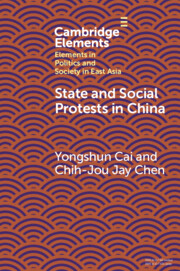Element contents
State and Social Protests in China
Published online by Cambridge University Press: 10 November 2022
Summary
- Type
- Element
- Information
- Online ISBN: 9781108982924Publisher: Cambridge University PressPrint publication: 08 December 2022



